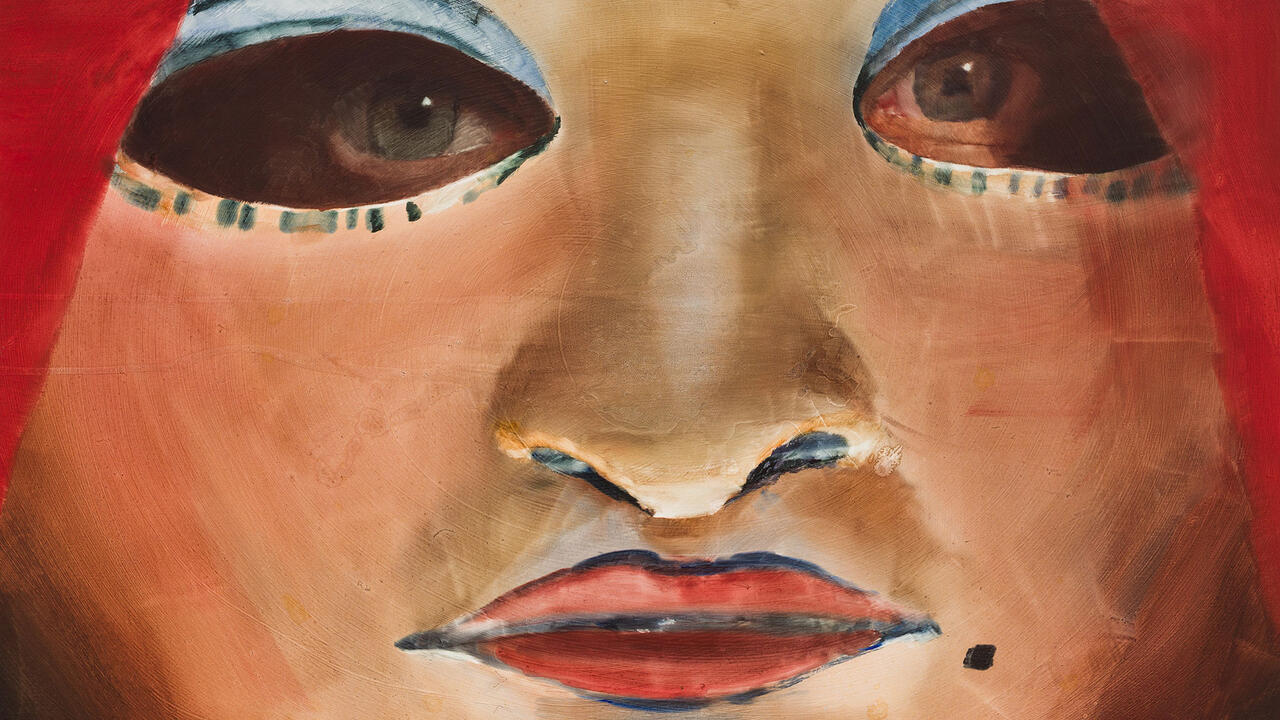Debate: Biennials
The proliferation of biennials has become integral to the explosion of contemporary art. Are large-scale international shows sites for experiment and exchange, or little more than tourist attractions?
The proliferation of biennials has become integral to the explosion of contemporary art. Are large-scale international shows sites for experiment and exchange, or little more than tourist attractions?
A profiterole is a cake made from a number of small éclairs filled with vanilla, covered with a layer of whipped cream and melted dark chocolate. It can be as big as King Arthur’s Round Table or as small as a bowl, depending on the number of people who are going to eat it. The structure of the art world today is similar to a profiterole: it started out small and is expanding to fill demand. Biennials are increasing exponentially, and so are art fairs and the number of auctions devoted to contemporary art. A lot of people are complaining about this phenomenon. Most of those who whine about it are freaks who would actually like to go to every biennial but can’t because of the sheer amount of time and money it would take. People who complain about art fairs and auctions are usually those who would like to buy more art but can no longer afford it. To put a limit on the number of art events that should exist is like putting a limit on the size of a profiterole.
I believe that the expanding world of contemporary art is the result of an expanding interest in art itself and, as a result, an expanding audience for that art – both phenomena that are, in my humble opinion, very positive indeed. The issue at stake is the fact that the art world, or the limited circus of people who consider themselves the art world, are no longer the exclusive beneficiaries of an art fair or a biennial. Other people less informed and more curious are now outnumbering the usual suspects who storm from Basel to Venice to Kassel to Kwangju to New York to Berlin and Istanbul. Each biennial and art fair is now more crowded with local people than ever before, with fewer nomadic individuals satisfied with what the local context has to offer. Curators and artists who are still obsessed with premiering a new work have not reflected this new reality, apart from attempting to stage the best show they can to an audience that is probably having its first opportunity to see such work. An art lover in Johannesburg will be more than happy to see a good work of art, even if it was shown six months previously in Kwangju or Venice. It is unlikely that the viewer in question would be able to travel at his or her own expense to the Venice Biennale or Manifesta 5.
It is a delusion on behalf of curators to believe that larger audiences are a response to the higher quality of their exhibitions. People like to look at art and couldn’t care less if a dealer, trustee or art critic thinks that the Director of the Venice Biennale or Documenta is a moron or a genius. More people have access to their brain and taste than we people of the art world Olympus tend to believe.
The tedious question ‘Do we need another biennial?’ is asked again and again, and it’s becoming a stupid one. My answer is ‘Why not?’ Who are we to decide if Umeå has the need or right to stage its own biennial, or, for that matter, Basel or Saigon? Biennials are like atomic bombs – anyone can build one, if they have the right material. The fact that the USA is complaining about other countries developing nuclear devices is a humorous paradox, considering that it is the only country that has actually employed one, and to devastating effect. To complain about other countries or cities developing their own cultural devices to fight the static arrogance of the West seems to me both illogical and laughable. The fact that Documenta and Venice have been successful does not guarantee them any exclusive right. If we choose to be economically raped at a cheap café in Venice, nauseated by the fumes of the rotten canals or infected by the sneeze of an unsuspecting SARS carrier in a street in Shanghai, that is, and hopefully will remain, a decision that is up to each and every one of us.
Francesco Bonami was the Director of The 50th Venice Biennale: ‘Dreams and Conflicts: The Dictatorship of the Viewer’. He is the Manilow Senior Curator at Large for the Museum of Contemporary Art in Chicago and also the artistic director of three Italian Foundations: Fondazione Sandretto Re Rebaudengo, Pitti Immagine Discovery , and Villa Manin Centre for Contemporary Art.
Charles Esche
I’m not really sure how useful the debate about the value of biennials has become. It’s always important to discuss structures, because nothing changes at all if these remain the same, but whether biennials are good or bad per se seems beside the point. There are, after all, radically diverse projects that masquerade under the same name. The issue is the extent to which the phenomenon of the large-scale international show can offer something different from what would otherwise exist.
The gallery system often provides a different form of creative freedom from the existing public institutions, whose agendas are controlled by governments and sponsors. Yet what survives, as value in the public sphere, is the surplus an art work transmits over and above its worth at auction. A relationship between art and economic globalization is inevitable, but the biennial needs above all to ask what kind of global culture it underwrites and how that support is made manifest.
The centre-first model of global art that largely began with ‘Magiciens de la Terre’ (1989) still holds sway over much of the museum and biennial world. This model requires the key institutions of contemporary culture officially to sanction the ‘periphery’ in order to subsume it into the canon of innovative visual art. Although this broadens participation, it does little or nothing to challenge the status quo ante. Even though the exhibiting artists themselves may have developed on the fringes of the recognized art world, their energy is validated and consumed by the centre and therefore the relationship between rim and hub remains in place. This is, of course, how globalization generally operates – sometimes to the economic benefit of the patronized but rarely in the interests of maintaining their autonomy or sustainability.
The phenomenal growth of new biennials over the last 15 years has been to some extent a counterweight to such tendencies. The creation of significant biennials in places such as Kwangju, Havana, Tirana, Johannesburg (briefly) and Sharjah has allowed the margins to talk back – and, more significantly, to talk among themselves. We could rightly say that they serve the needs of an expanding market eager for new product as well as pointing to the fact that they generally conform to certain common (read: Western) standards of display. Yet they also offer a glimpse of the potential that could be released if international visual culture were to bypass the central control systems, abandon the old centre-first model and make direct links between diverse non-Euro-American positions.
What is most exciting about these newer biennials is their relative distance from a purely commercial system and their engagement with local political conditions. The presentation of art in Kwangju, in South Korea, is conditioned by the city’s history as a hotbed of civic unrest; in Cetinje the fight over symbols that was so much a part of the Yugoslav wars affects what art can be shown and how it is received. Such projects have less to do with the gallery system than with the relationship between art and local versions of modernity. These do not have to follow a pattern laid down by the centre, but can reject any recourse to largely manufactured national or religious traditions and instead enter the tricky territory of continuous compromise. At their best these biennial projects suggest how a radically democratic global public sphere could be visualized at a local level.
Of course, the justification for the ‘marginal’ biennials as harbingers of an alternative view of global exchange is a rather double-edged sword. Rather than serving a vital function as staging posts for museums and fixed institutional structures, they have often come to replace them, crudely jeopardizing the continuous dialogue between new art and the locality.
I see the Istanbul Biennial as pivotal in terms of this ambivalence. Having begun in 1987 with the politically determined aim of ‘catching up’ with perceived cultural progressiveness in the West, the event has helped to transform the artistic climate of a city that can now boast a productive artistic community conversant with current developments in Western cultural and economic capitals. This development has placed Istanbul in a similar position to the ‘core biennials’, whose purpose – beyond a great party and a tourist attraction – is hard to fathom. In Venice, where full-scale urban musealization has already taken place, I imagine rescue is impossible. Yet elsewhere some biennials may be beginning a process of maturing away from the event-culture model, though not before time. In Guangzhou (China) 2006, in the plans for Manifesta 2006 in Nicosia (Cyprus) as well as in what Vasif Kortun and I are proposing for Istanbul 2005, there seems to be a common thread in terms of working with residencies, commissions and educational models -– generally speaking, more intimate forms of exchange, connecting art production to the particularities of a place.
The real way to test out whether the biennial serves a social function within the public sphere is to deepen the distinction between it and the art museum. While in the past years museums have sought to model themselves on private corporations, biennials have often been the main source of experimentation and risk-taking as far as exhibitions are concerned. Yet both the museum and the biennial are now on the verge of burn-out and domination by crude financial targets, as elephantine ambitions overwhelm all other criteria.
In the Van Abbemuseum in October a project called ‘Eindhoven Istanbul’ will test out the possibility of a sustainable exchange between the biennial and the museum, while at around the same time the Fridericianum in Kassel will look back at 50 years of Documenta. In defining the biennial as synchronic, immediate and spectacular and the museum as diachronic, reflexive and intimate, we may be going too far in restricting possibilities. Both need to remain locally grounded and to understand the nature of the audiences for whom the projects are constructed. Yet such a definition at least provides the start of a meaningful dialogue, one that may lead to entirely new models of the ‘big art event’.













